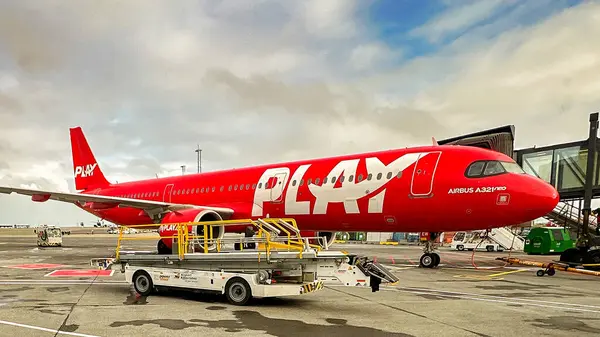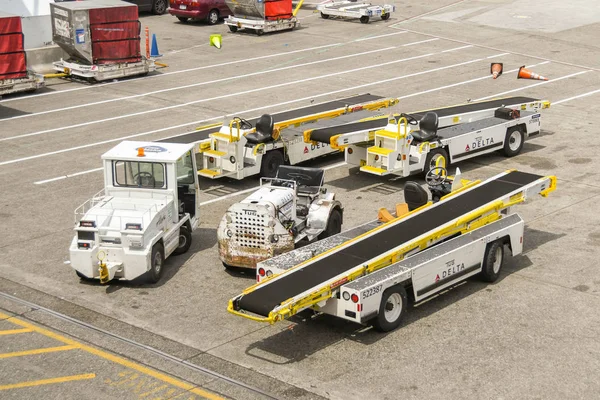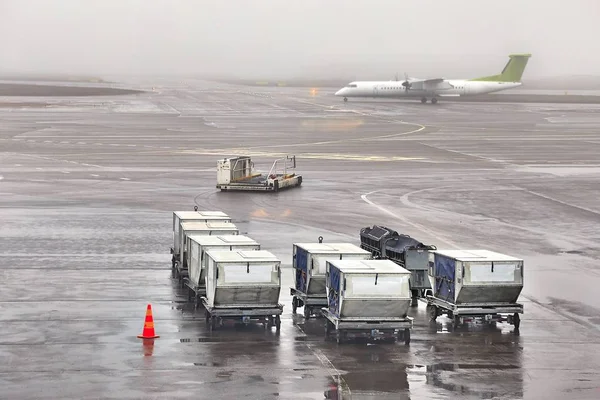Tianchang Cheers Metal Limited.
Country/Region: China
The cargo hold of a passenger aircraft is loaded with tons of passenger baggage and cargo that needs to be loaded and unloaded in a short period of time. The real challenge of loading and unloading cargo on an aircraft lies in the time constraints.
Aircraft can only make a profit when they are in the air, so airlines do not want their aircraft to stay on the ground. Once the aircraft lands, preparations for the next flight begin. These preparations include unloading all the baggage and cargo from the arriving flight and loading new cargo for the departing flight. Specialized equipment and well-coordinated teamwork ensure that this task does not delay the aircraft's takeoff.
In this article, we will learn about the loading and unloading of baggage and cargo at the airport, focusing on understanding the ground support equipment involved in the process.

Baggage transportation from airport lounges to parking positions
Airports have complex conveyor belt systems that receive passengers' baggage from the check-in counters in the airport lounge and transport it to different parts of the airport. In large airports, the entire conveyor belt network can be several kilometers long. It all starts when you check in your baggage at the check-in counter in the airport lounge.
The check-in counter staff loads your baggage onto the check-in conveyor belt, which in turn delivers it to a series of conveyors that eventually deliver it to the baggage conveyor belt, where it is arranged for further processing by airline staff. At this point, the baggage is still inside the airport building. Airline staff manually transfer all the baggage from the baggage conveyor belt to a baggage cart or unit load device (ULD), which we will explain later in this article. For now, let's first learn about baggage carts. Ground staff load multiple baggage carts with baggage and connect them together to form a train of baggage carts to tow to the aircraft. At this point, the baggage is ready to leave the airport building.
Tow trucks are used to tow baggage carts from the airport building to the parking stand where the aircraft is parked or to the restricted area of the hangar. For large passenger aircraft such as the Boeing 777 or 747, the tow truck may need to make multiple turns to transport a full baggage. At this point, the baggage is in the open-air cabin, beyond the airport building, ready to be loaded into the aircraft cargo hold.
Once the baggage carts have arrived at the parking stand, it is time to load the baggage into the aircraft cargo hold. The problem is that the aircraft cargo door is several feet off the ground, so it is not possible to load the baggage into the hold manually. There is a specialized ground support equipment called a belt loader that can be used to do this job.
A airport belt loader is simply a mobile conveyor belt. The conveyor belt is mounted on a boom whose inclination can be adjusted to suit the height of the aircraft cargo hold.
The conveyor belt is driven by a motor that rotates in both directions to enable loading and unloading. Rubber bumpers are provided at the end of the boom to prevent any scratches or indentations to the aircraft body when the conveyor loader comes into contact with it. The entire system is mounted on a truck chassis for easy movement.
The operation is simple. The belt loader conveyor belt is started by pressing the forward button on the cargo loader control panel for loading. One or two team members unload the baggage from the baggage cart and manually load it onto the conveyor belt. The baggage moves up the incline and does not slide off due to the friction between the baggage and the conveyor belt fabric. The operator who is already waiting in the aircraft cargo hold receives the baggage and organizes it into the cargo hold. In this way, man and machine work together to load the baggage into the cargo hold.

Unit Load Devices (ULDs) and Cargo Trolleys
An alternative to baggage trolleys is the use of a unit load device (ULD). It is a standardized container used to store baggage or cargo in an aircraft. The dimensions and sizes of ULDs are standardized, and a specific type of ULD is suitable for a specific type of aircraft. The dimensions and sizes depend on the cargo hold design of the aircraft type that the ULD is compatible with. The main advantage of using a ULD is that it saves time. Baggage is bundled into fewer handling units, making loading and unloading easier.
In addition, organizing baggage in the cargo hold is made easier as there is no need for manual sorting. ULDs are designed so that they can slide and fit in the cargo hold and are equipped with corresponding devices to ensure that they are firmly fixed to the cargo hold surface during flight to prevent them from moving or getting out of place.
Unit Load Devices (ULDs) are not only used to transport baggage, but also other cargo, such as mail and spare parts packages. It is not difficult to understand how a unit load device (ULD) simplifies the handling of baggage and cargo. Instead of unloading luggage from the airport baggage carousel onto a baggage trolley, staff load the luggage into a unit load device (ULD).
These ULD containers are placed on cargo dollies, which are special carts designed to carry ULDs and transfer them to the cabin using a tractor, just like a baggage dollie.
Cargo trailers are specially engineered to carry unit load devices (ULDs). The trailers are equipped with rollers to prevent the ULDs from being scratched when the crew pushes and pulls them on the cargo trailer. In addition, the trailers have built-in locks that lock the ends of the ULDs to prevent them from sliding on the cargo trailer and falling when the tractor turns.

Cargo Loader
Once the ULDs are transported to the aircraft parking area with the help of the tractor, the ULDs are loaded into the aircraft cargo hold by a special machine called a cargo loader, as belt loaders are not designed to load ULDs. Like many other ground support equipment, the entire system of the cargo loader is built on a truck chassis and can be driven to the desired aircraft parking position for operation.
It has two platforms. The frontmost platform is called the bridge, as it acts as a bridge between the aircraft cargo hold and the loading platform. The bridge is mounted on a scissor lift so that its height can be adjusted to the height of the aircraft door.
The operating panel of the cargo loader is also located on the bridge and is used to control the height movement as well as drive the truck. Loading platform This is where the ground staff load all the ULDs from the cargo trailers. The platform is also mounted on a scissor lift mechanism that can be raised and lowered independently of the bridge.
Once the ground staff loads the ULDs onto the platform, the operator raises the platform to the same height as the bridge, which in turn is the same height as the aircraft door. This way, all three platforms are at the same level and the system is set up for transferring ULDs and cargo packages in the aircraft cargo hold.
Cargo and baggage handling for arriving and connecting flights
When unloading cargo and baggage, the entire process is reversed. The cargo loader unloads the cargo; the belt loader unloads the baggage; and the staff loads the baggage carts or ULDs onto the cargo trailers on the apron and tows them to the airport building.
Cargo trailers loaded with ULDs and baggage carts loaded with baggage are transported from the aircraft to the airport building, where staff unload the baggage via the baggage claim belt, from where passengers can collect their baggage.
Similarly, in connecting flights, baggage and cargo are not transferred directly to the airport, but to another aircraft. This is why time is of the essence in cargo and baggage handling. Any delays will directly affect the flight schedule and cause dissatisfaction among passengers.
Copyright © 2025 Tianchang Cheers Metal Limited. | All Rights Reserved
We are here to help you! If you close the chatbox, you will automatically receive a response from us via email. Please be sure to leave your contact details so that we can better assist